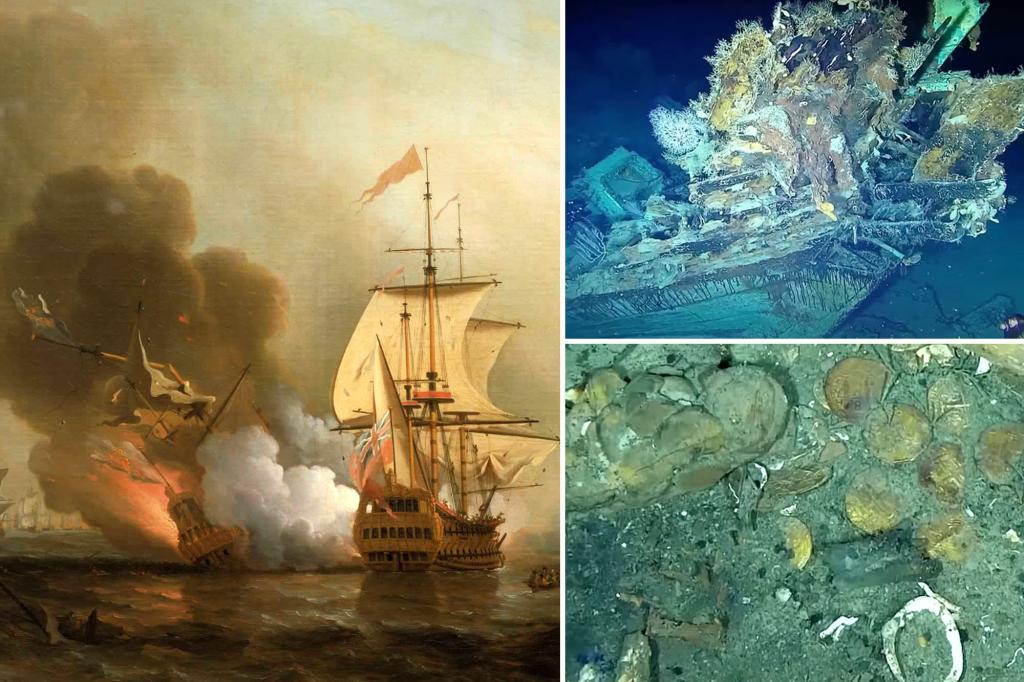
A mission to recover a three-century-old sunken ship believed to be holding $20 billion worth of treasure has been launched by the Colombian government.
Colombian President Gustavo Petro ordered his administration to exhume the “Holy Grail of shipwrecks” — the Spanish galleon San José — from the floor of the Caribbean Sea as soon as possible, the country’s minister of culture told Bloomberg last week.
Petro wants to bring the 62-gun, three-masted ship to the surface before his term is up in 2026 and has requested a public-private partnership be formed to see it through, Minister of Culture Juan David Correa told the outlet Wednesday.
“This is one of the priorities for the Petro administration,” he said. “The president has told us to pick up the pace.”
But mystery surrounds the ownership of the massive trove of gold, silver and emeralds estimated to be worth anywhere between $4 billion and $20 billion, according to a lawsuit.
The crux of the issue appears to revolve around who is believed to have found it.
The San José galleon — with 600 crew members onboard — sank some 2,000 feet on June 8, 1708, during a battle against the British in the War of the Spanish Succession.
Built in 1698 by Duke Arístides Eslava, the vessel was the flagship of Spain’s treasure fleet. During the war, the San Jose would routinely travel between Peru and Spain carrying gems and precious metals.
Accounts vary about what exactly happened on its final voyage in 1708, but it is believed that the San Jose left Panama for Cartagena, along with two other galleons and 14 merchant vessels.
The ship was laden with gold, silver and emeralds mined in Bolivia, which were essential for bankrolling Spain’s war effort against the British.
After docking for the night on the island of Barú, off the coast of Cartagena, the fleet encountered four British warships and engaged in a fierce gun battle that lasted into the twilight hours.
One of the three galleons, the San Joaquin, managed to flee the skirmish under the cover of nightfall and escape unscathed. The fleet’s other galleon, the Santa Cruz, was later captured but had few valuables on board.
The San Jose, however, suffered catastrophic damage when its powder magazine exploded after being struck by British gunfire. It quickly slipped beneath the surface of the sea, killing all but 11 of its crew.
The wreck remained a thing of legend for years as its exact location was unknown.
Then in 1981, the US company Glocca Morra claimed it discovered the lost treasure and turned over its coordinates to Colombia with the promise it would receive half the fortune when recovered.
Years later, in 2015, Colombia’s then-President Juan Manuel Santos said the country’s navy found the San José wreck at a different location on the sea floor.
Colombia has never released the coordinates of the ship’s final resting place, but Glocca Morra — now called Sea Search Armada — believes the country found part of the same debris field in 2015 that it first discovered 34 years earlier.
The company is suing the Colombian government for half the treasure, or $10 billion, according to its estimate, under the US-Colombia Trade Promotion Agreement, according to Bloomberg.
Correa, meanwhile, told the outlet that the government’s researchers visited the coordinates shared by Sea Search Armada and “concluded that there is no shipwreck there.”



 4
4